WARNING: If you hate close ups of beneficial microbes, look away now!
Probiotics is big business. There are tens of thousands of probiotic pills with varying potencies, and they are not cheap either.
It was years ago that I began thinking ‘I wonder if there is a live culture drink that I can buy’ and I came across the Microbz website, and its product BioLive. I love supporting small businesses so I subscribed and I’ve been using this product for years.
The taste is okay, if you don’t mind apple cider vinegar, but the BioLive Kids doesn’t contain any cider vinegar. Each bottle contains 15 beneficial microbes strains.
There is another drink on the market today, Symprove.com, which contains only 13 microbes strains, and it’s definitely more pricier than BioLive.
If you subscribe to a three month pack of BioLive, it’s only £56.40 or £0.62 pence per day and all you need to take is 15 to 20 ml per day. Its also safe for babies, kids and pregnant and breastfeeding women.
Bacteria have had a bad rap.
The concept that they cause disease dominated microbiology — the ‘kills 99% of all germs’ idea fuelled a vast arsenal of chemical products we regularly put on and in ourselves, our homes and our land.
It turns out that our war against microbes has compromised human health and wellbeing. The microbial world consists of mostly beneficial species doing vital jobs in almost every aspect of life on the planet, and we have barely scratched the surface in studying its mysteries, and its benefits.
The Beneficial Microbes
Here’s how these various names of beneficial microbes benefit the body. It’s fascinating.
Bacillus Subtilis
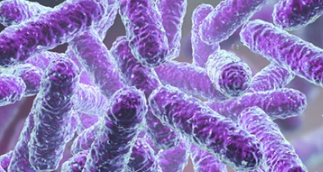
Species: B.subtilis is a genus of Gram-positive, catalase-positive bacterium, found in soil. It is spore forming, motile and rod-shaped. It has the ability to produce and secrete antibiotics.
Location in the body: Gastrointestinal tract
This microbe produces: This microbe secretes antibiotics and potentially clears a build-up of the protein alpha-synuclein.
History: Originally named Vibrio subtilis by Christian Ehrenberg and renamed Bacillus subtilis by Ferdinand Cohn in 1872. In the 1900’s it was popular worldwide, before the introduction of antibiotics, in the treatment of gastrointestinal and urinary tract disease. It holds the record for surviving in space for 6 years on a NASA satellite.
What does this microbe do? Significantly stimulates broad-spectrum immune activity including the activation of secretion of IgM, IgG, IgA. It also acts as an immunostimulant.
Indications: Parkinson’s disease, Rotavirus, Shigekkosis. Salmonella, constipation, H.pylori infections, diarrhoea, IBS, Ulcerative colitis, reduces periodontal pathogens. Raises immunity.
Bifidobacterium bifidum
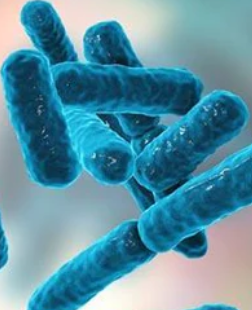
Species: Bifidobacterium bifidum is one of the most common probiotic microbes bacteria found in the body.
Location in the body: Stomach and intestines, vagina and mouth
This microbe produces: Gamma-Aminobutyric acid or γ-aminobutyric acid (GABA) is a neurotransmitter found in the brain. GABA is a naturally occurring amino acid that works as a neurotransmitter blocking or inhibiting certain brain signals and decreasing activity in the nervous system. Researchers think GAMA may make a person calm or boost mood.
History: Discovered in 1899 by French paediatrician, Henry Tissier at the Pasteur Institute where he noticed a strange “Y” shaped microorganism in the stool of infants who had diarrhoea.
Found in: Fermented foods such as yoghurt and kimchi, Miso, tempeh, pickles, sour dough bread, some vinegar, buttermilk, cured meats and certain wines.
What does this microbe do? It belongs to a group of microbes bacteria sometimes known as lactic acid bacteria, it assists in the breakdown of food, the take-up of nutrients and prevents the imbalance of microbes caused by a take over of pathogenic bacteria.
Indications: Ulcerative colitis, IBS, in breast milk it may reduce the growth of Gram-negative in infants, H.pylori, restoration of the gut after chemotherapy, constipation, lung infections, necrotizing enterocolitis, depression.
Bifidobacterium Breve
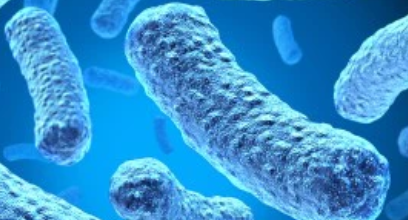
Species: Bacillus breve is a Gram-positive, anaerobic, rod shaped organism that is non-motile and forms branches with its neighbours. It has probiotic properties and is a type of bacteria that will live symbiotically in the intestines of humans.
Location in the body: The colon. Also found in human breast milk.
This microbe produces: Gamma-Aminobutyric acid or γ-aminobutyric acid (GABA) is a neurotransmitter found in the brain. GABA is a naturally occurring amino acid that works as a neurotransmitter blocking or inhibiting certain brain signals and decreasing activity in the nervous system. Researchers think GAMA may make a person calm or boost mood.
History: Henry Tissier. Originally isolated from the faeces of human infants in 1971.
Found in: Fermented milk and yoghurt, kimchi, kombucha, water kefir and raw sauerkraut.
What does this microbe do? Antimicrobial, anti-inflammatory and immunostimulant.
Indications: Patented treatment for colitis, inflammatory bowel disease, anxiety. Improves recognition and memory. Widely used in paediatrics and is the dominant species in the gut of breast-fed infants and has been isolated from human milk. Diarrhoea, infant colics, celiac disease, obesity, allergic and neurological disorders. Used for the prevention of side infections in preterm newborns as well as skin health, allergies, constipation, obesity, asthma.
Bifidobacterium Infantis
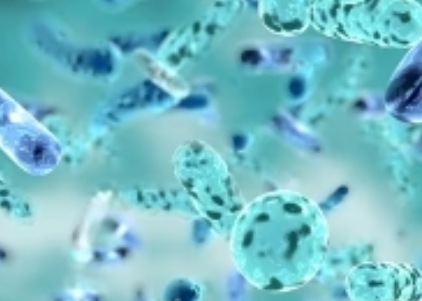
Species: Bifidobacterium infantis is a friendly lactic acid bacteria found in the same group as Lactobacillus.
Location in the body: The colon, mouth and gastrointestinal tract.
This microbe produces: Gamma–Aminobutyric acid or γ-aminobutyric acid (GABA) is a neurotransmitter found in the brain. GABA is a naturally occurring amino acid that works as a neurotransmitter blocking or inhibiting certain brain signals and decreasing activity in the nervous system. Researchers think GAMA may make a person calm or boost your mood. It also produces Tryptophan, an essential amino acid that serves several important purposes, like nitrogen balance in adults and growth in infants.
History: Discovered by the French paediatrician, Henry Tissier.
Found in: some yoghurts, olives, sauerkraut, salami and cheese. Also added to infant formulas.
What does this microbe do? It is anti-inflammatory and assists in the maintenance of a healthy digestive tract. Research suggests that it is unique in its ability to reduce intestinal inflammation. Research from the University of California suggests that this dominant microbes bacterium is disappearing from the guts of infants in the Western world due to a rise in caesarean births adding to the increase of allergies, diabetes and obesity.
Indications: Depression, anxiety, cognition, IBS with symptoms of stomach pain, bloating and gas, chronic fatigue, psoriasis, vaginal yeast infections, urinary tract infections and lactose intolerance.
Bifidobacterium Longum

Species: Bifidobacterium longum is a Gram-positive, catalase-negative, rod-shaped bacterium. It forms glossy white colonies with a convex shape. The strain 35624 is one of the most researched probiotic strains.
Location in the body: The gastrointestinal tract.
This microbe produces: Gamma–Aminobutyric acid or γ-aminobutyric acid (GABA) is a neurotransmitter found in the brain. GABA is a naturally occurring amino acid that works as a neurotransmitter blocking or inhibiting certain brain signals and decreasing activity in the nervous system. Researchers think GAMA may make a person calm or boost your mood.
History: Discovered by the French paediatrician, Henry Tissier.
Found in: Goat diary products, kefir, seaweed and miso soup.
What does this microbe do? It is anti-allergy and anxiolytic meaning it can help to reduce anxiety; it inhibits colon cancer and modulates the intermediate markers of colon carcinogenesis.
Indications: Anxiety, depression, diarrhoea, pathogen inhibition, allergies, cognition problems, common cold and flu.
Lactobacillus Acidophilus
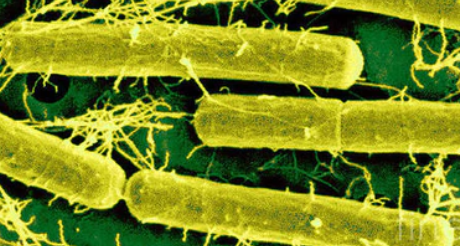
Species: Lactobacillus acidophilus is a genus of gram-positive, microaerophilic, rod-shaped, non-spore forming bacteria.
Location in the body: Intestines, the transverse colon.
This microbe produces: Hydrogen peroxide and lactic acid by producing an enzyme called lactase. GABA (Gamma-aminobutyric acid) a naturally occurring amino acid that works as an inhibitory neurotransmitter in your brain and helps treat anxiety, and acetylcholine, another essential neurotransmitter.
History: Discovered in 1924, L.acidophilus was the first strain made available 30 years ago.
Found in: Fermented foods, for example, kimchi and sauerkraut, yoghurt, kefir, miso, tempeh.
What does this microbe do? Attenuates oxidative stress, systemic inflammation, glycaemic control, sphingolipid balance and anxiety.
Indications: Lowers cholesterol, prevents or reduces diarrhoea, improves symptoms of IBS, prevents and treats vaginal infections, assists in weight loss, reduces the duration of colds and flu, decreases allergic reactions, prevents and reduces eczema symptoms, fabulous for the gut, Crohn’s disease, diabetes, respiratory infections and vaginal infections.
Lactobacillus Bulgaricus
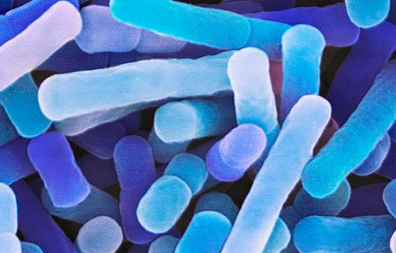
Species: Lactobacillus bulgaricus is a Gram-positive, facultatively anaerobic (which means it can survive in the presence of or absence of oxygen), non-motile and non-spore-forming rod shaped lactic acid bacteria.
Location in the body: The gastrointestinal tract
This microbe produces: Lactic acid bacterium and Tryptophan, an essential amino acid that serves several important purposes, like nitrogen balance in adults and growth in infants.
History: Thracians who inhabited today’s Bulgaria 8,000 years ago utilized the lactic acid bacteria in the process of fermenting milk and this bacteria was named after Bulgaria. It was re-discovered in 1905 by Bulgarian Dr Stamen Grigorov. In 2012 it was declared India’s national microbe.
Found in: Goat dairy products, kefir, seaweed, and miso soup.
What does this microbe do? It has had significant results in the GHQ (General Health Questionnaire) especially on the DASS (Depression and Anxiety Stress Scale). It is known to reduce emotional reactivity to negative stimulus and is effective in alleviating gastrointestinal, immunological and infectious diseases through stabilizing gut microbiota and improving the intestinal environment. It is also known for boosting the immune system.
Indications: E.Coli, Salmonella, protective against genetically predisposed social anxiety symptoms and anti-aging.
Lactobacillus Casei
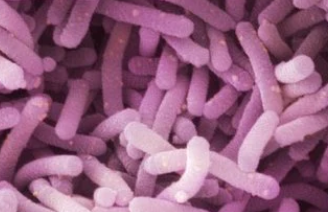
Species: Lactobacillus casei is the dominant species of nonstarter lactic acid bacteria
Location in the body: The transverse colon, urinary tract and mouth.
This microbe produces: Gamma-Aminobutyric acid or γ-aminobutyric acid (GABA) is a neurotransmitter found in the brain. GABA is a naturally occurring amino acid that works as a neurotransmitter blocking or inhibiting certain brain signals and decreasing activity in the nervous system. Researchers think GAMA may make a person calm or boost mood. It also produces Acetylcholine, another crucial neurotransmitter.
History: First proposed to be discovered in 1971 but it has a convoluted history whereby research has rejected and reclassified it many times.
Found in: Raw and fermented dairy products, fresh and fermented plant products.
What does this microbe do? This microbe is sensitive to intestinal conditions by having higher bile salts. It also binds to the luminal surface of gastrointestinal cells and stimulates gut-associated lymphoid tissue which in turn strengthens the innate immune response giving local and systemic immunity.
Indications: Urinary tract infections, IBS, cholesterol-lowering, diarrhoea, alleviates lactose intolerance, inhibits intestinal pathogens.
Lactobacillus Fermentum
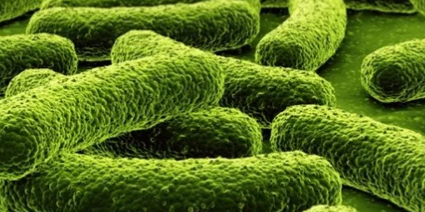
Species: Lactobacillus fermentum is a Gram-positive bacteria that survives stomach acid. It is a non-motile, non sporing, rod-shaped lactic acid bacteria.
Location in the body: The gastrointestinal tract, mouth and the vagina.
This microbe produces: Gamma-Aminobutyric acid or γ-aminobutyric acid (GABA) is a neurotransmitter found in the brain. GABA is a naturally occurring amino acid that works as a neurotransmitter blocking or inhibiting certain brain signals and decreasing activity in the nervous system. Researchers think GAMA may make a person calm or boost mood.
History: Isolated in 1994 as the result of a joint research project between the University of Linkoping and University of Tartu.
Found in: Sourdough bread, goat products, soil, high-quality cocoa, caciocavallo and Parmigiano cheese and fermented foods.
What does this microbe do? This is another one of the beneficial microbes that is proven antimicrobial, antioxidant, anti-inflammatory, immunostimulant, anti-aging and it has the capacity to suppress Gram-negative bacteria.
Indications: Salmonella, Shigella, urinary tract infections; it lowers cholesterol, E. coli, staphylococcus, decreases symptoms of ulcerative colitis and IBS, fights vaginosis, respiratory infections, improves mood and cognition, decreases anxiety, influenza.
Lactobacillus Lactis

Species: Lactobacillus lactis is a Gram-positive, non sporing and non motile bacterium.
Location in the body: The duodenum, ileum, cecum and colon.
This microbe produces: Lactic acid bacterium and GABA. Gamma-Aminobutyric acid or γ-aminobutyric acid (GABA) is a neurotransmitter found in the brain. GABA is a naturally occurring amino acid that works as a neurotransmitter blocking or inhibiting certain brain signals and decreasing activity in the nervous system. Researchers think GAMA may make a person calm or boost your mood.
History: The Lactobacillus lactis was discovered by Whitehead and Cox in 1935. It was the first genetically modified organism to be used alive for the treatment of human disease.
Found in: Cheese, plant material, pickles, buttermilk and fermented foods.
What does this microbe do? It produces lactic acid from sugars and it can secrete cytokine interleukin-10 for therapeutic intervention of inflammatory bowel disease.
Indications: Depression, skin health problems, and inflammatory bowel disease.
Lactobacillus Plantarum

Species: Lactobacillus plantarum is a Gram positive, bacilli shaped bacteria.
Location in the body: The transverse colon and in saliva.
This microbe produces: GABA — a crucial neurotransmitter found in the brain that helps reduce anxiety, acetylcholine — a crucial neurotransmitter that aids communication between cells in the body, lysine — an amino acid and lactolin — thought to improve cognitive performance.
History: Discovered by microbiologist Orla-Jensen in 1919.
Found in: Fermented food products, anaerobic plant matter, milk products, oatmeal soup, sourdough bread, olives.
What does this microbe do? Best described as a nootropic and neuroprotective agent, so this is another of the microbes that provides
plenty of support to the brain and cognitive function. It is also an antioxidant, anticancer, anti-inflammatory, antiproliferative, anti-obesity, and is immune-boosting.
Indications: IBS, flatulence, burns, decreases the frequency of colds and flu, fungal infections, reduces the risk of pneumonia, reduces blood pressure, lowers the risk of kidney stones.
Lactobacillus Rhamnosus
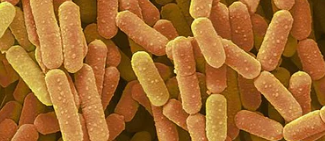
Species: Lactobacillus rhamnosus is a short Gram-positive, heterofermentative facultative, non sporing rod that often appears in chains.
Location in the body: The transverse colon, healthy female genitourinary tract.
This microbe produces: Gamma-Aminobutyric acid or γ-aminobutyric acid (GABA) is a neurotransmitter found in the brain. GABA is a naturally occurring amino acid that works as a neurotransmitter blocking or inhibiting certain brain signals and decreasing activity in the nervous system. Researchers think GAMA may make a person calm or boost your mood.
History: Isolated in 1983 from the intestinal tract of a healthy human by Sherwood Gorbach and Barry Goldin.
Found in: Dairy products, kombucha, kefir and fermented foods.
What does this microbe do? This is another one of the beneficial microbes that breaks down sugar lactose, found in dairy, into lactic acid.
Indications: Anxiety, depression, antibiotic diarrhoea, vaginosis, atopic dermatitis and eczema, acute gastroenteritis, IBS and may protect against dental cavities, Crohn’s Disease, ulcerative colitis.
Saccharomyces Boulardii
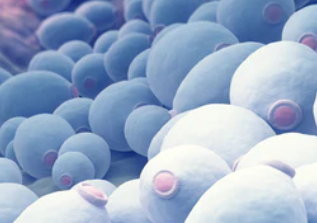
Species: Fungi
Location in the body: The Ileum, which is part of the intestine, and the colon.
This microbe produces: A protease is an enzyme that catalyses proteolysis, the breakdown of proteins into smaller polypeptides or single amino acids. They play an essential role in supporting blood clotting, cell division and the recycling of proteins.
History: A tropical species of yeast first isolated in 1923 by French scientist Henri Boulard.
Found in: Fermented foods.
What does this microbe do? It is antimicrobial and has antitoxin effects, and supports the trophic action on the intestinal mucosa. A regulator of the immune response, it reduces pro-inflammatory responses and produces mucosal anti-inflammatory signalling effects.
Indications: Diarrhoea (rotaviral), IBS, anxiety, IBS, ulcerative colitis, Crohn’s disease, Lyme disease, acne, H.pylori, urinary tract infections.
Saccharomyces Cerevisiae
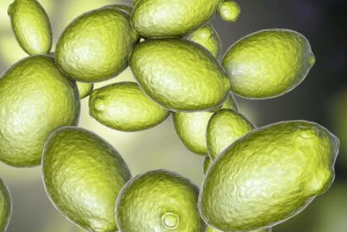
Species: A non-motile fungi that reproduce by budding. Both Gram-positive and Gram-negative.
Location in the body: The mouth, intestines and skin.
History: Louis Pasteur discovered the Saccharomyces cervisiae in 1857. Is was the first eukaryote for which a genome was completely sequenced and has been studied as a model organism for decades.
Found in: Skins of grapes and other fruit.
What does this microbe do? Used as a cell factory to produce insulin, human serum, albumin and hepatitis vaccines.
Indications: Gastrointestinal disorders e.g. inflammatory bowel disease, diarrhoea.
Streptoccus Thermophilus
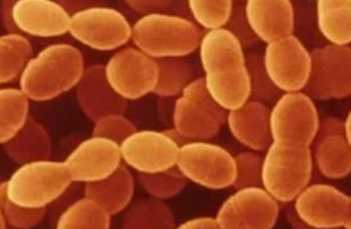
Species: Gram-positive bacteria, and a fermentative facultative anaerobe, of the viridans group.
Location in the body: The stomach.
This microbe produces: Folic acid, formic acid and serotonin.
History: Russian biologist Ellie Metchnikoff discovered this strain in 1907.
Found in: Yoghurt and fermented milk.
What does this microbe do? It keeps the gut healthy by binding to the intestinal cells in the intestines and keeping harmful pathogens out. It is also known to reduce gut inflammation and improve immune health.
Indications: Acne applied topically to the skin. It can also help diarrhoea, depression, ulcerative colitis, gut dysbiosis, IBS, prevent and fight upper respiratory infection (e.g. pneumonia).
Final word
So there you have it. Microbes — they are SO INCREDIBLY beneficial for the body, and yet not enough of us are looking after our gut health. If you want to benefit your gut health from just £0.62 pence per day, try Biolive by Microbz. There are many varieties. I take the Kids one, and took it all through my pregnancy and am still breastfeeding, and I also give 5ml to my baby daughter, as it’s completely safe. They also make home and garden products containing microbes. Here is a post I wrote working with their Microbz Plant Protector in preventing carrot fly damage.
If you want to save 20% on your purchase, use discount code: LUVMICROBZ
[affcoups vendor=”3314″]
Note: This post contains affiliate links, which if you click through to and make a purchase, I will earn a small commission, but this is at no additional cost to yourself. Thank you!

